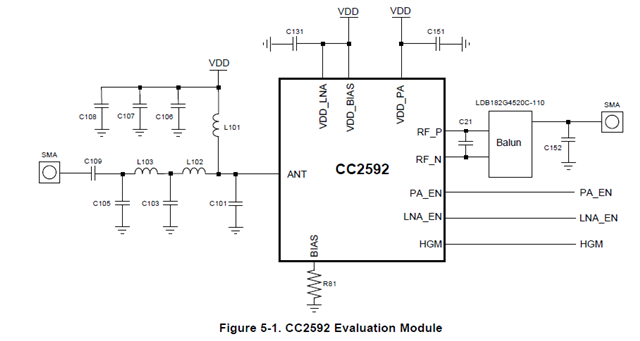Other Parts Discussed in Thread: CC2520, CC2592, CC2530
Hello
One product of our company uses CC2520+CC2592 scenario for Zigbee function. This product has been released for several years. Recently, many samples failed the EVM test in production test.
When I reviewed its design files and BOM, I found there are two differences between our design and CC2592 reference design. The below picture is the part of CC2592 SCH.

Differences:
1. C97(1uF) and C101(1nF) were not mounted on the board.
2. The transmission (from CC2592 output to antenna) impedance is about 42 ohm.
So I have some questions about it.
Question:
1. If these two capacitors which are mounted on board will affect the EVM performance?
2. If the transmission line impedance which is not 50 ohm will affect the EVM performance?
3. Is there optimal load impedance for CC2592 PA? I don't find it on datasheet.
Thanks.


